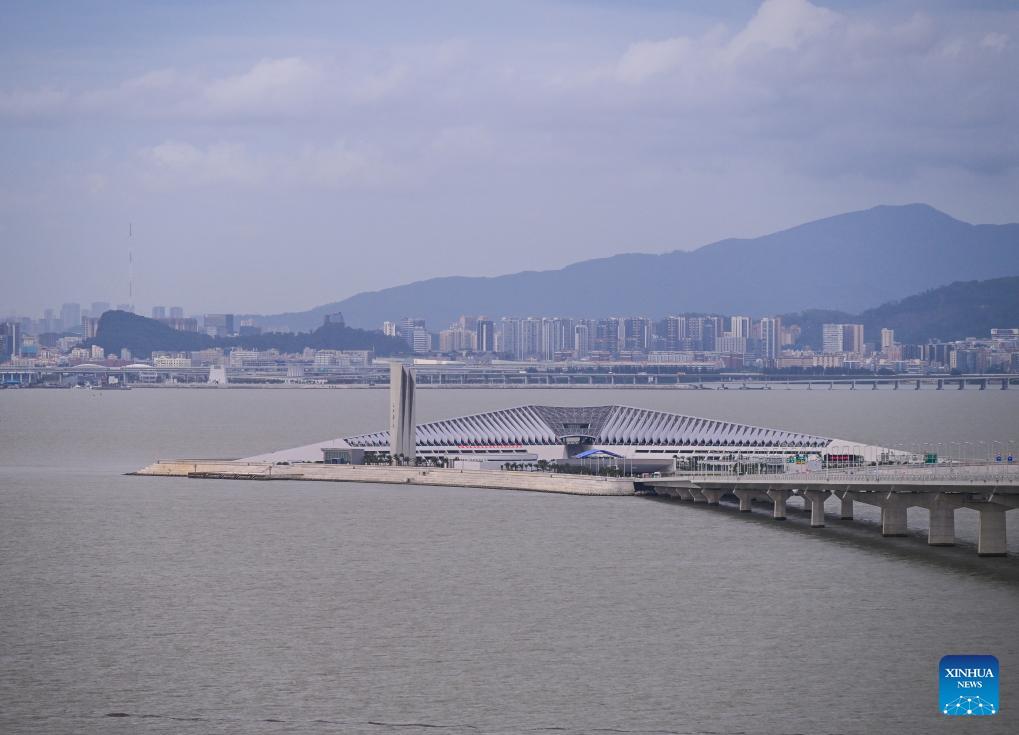Xinhua | July 1, 2024
This photo taken on June 29, 2024 shows the west artificial island of the Shenzhen-Zhongshan Link in south China's Guangdong Province. The Shenzhen-Zhongshan Link, a mega cross-sea passage in south China that features two bridges, two artificial islands, and an underwater tunnel, opened to traffic at 3 p.m. on Sunday. Spanning 24 km, the link drastically reduces travel time between the city of Zhongshan and the technology hub of Shenzhen, situated on opposite sides of the Pearl River Estuary in Guangdong Province, cutting the duration of the trip from two hours to around 30 minutes. (Xinhua/Liu Dawei)
The Shenzhen-Zhongshan Link, a mega cross-sea passage in south China that features two bridges, two artificial islands, and an underwater tunnel, opened to traffic at 3 p.m. on Sunday.
Spanning 24 km, the link drastically reduces travel time between the city of Zhongshan and the technology hub of Shenzhen, situated on opposite sides of the Pearl River Estuary in Guangdong Province, cutting the duration of the trip from two hours to around 30 minutes.
The new transport route boasts eight lanes designed for speeds of up to 100 km per hour.
The Shenzhen-Zhongshan Link is another large-scale transportation project in the Guangdong-Hong Kong-Macao Greater Bay Area (GBA), following the Hong Kong-Zhuhai-Macao Bridge, which is situated approximately 31 km south of the new link.
"Its opening will reshape the road network layout of the Pearl River Estuary, significantly impacting the economic and social development of the GBA," said Lin Feiming, head of the Guangdong provincial department of transport.
The GBA, encompassing Hong Kong, Macao, and nine cities in Guangdong, covers 56,000 square km. It achieved a total economic output of over 14 trillion yuan (around 1.96 trillion U.S. dollars) in 2023.
China aims to develop the area into a world-class city cluster, a global technology and innovation center, and a livable business-friendly location.




